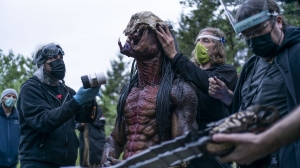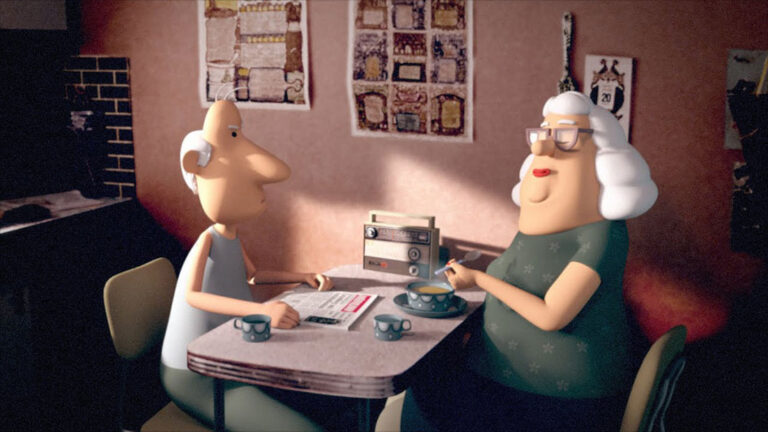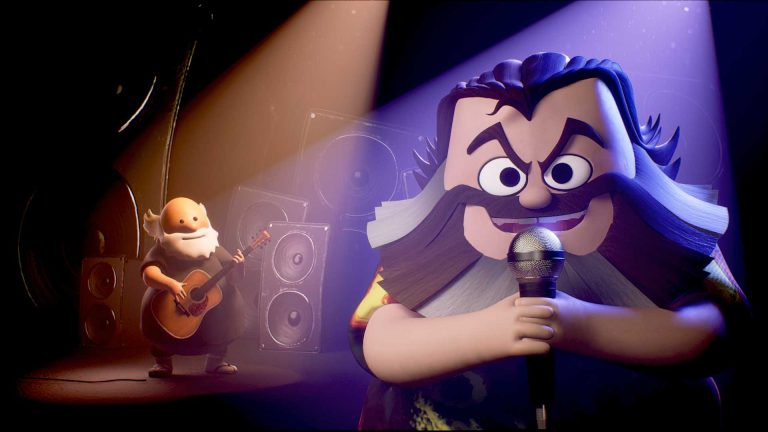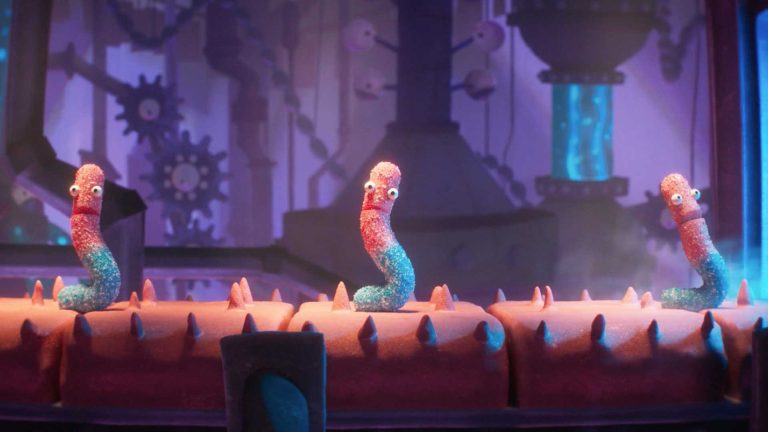The major challenges were creating a costume that allowed for the desired fight choreography, withstood the weather, and did not look humanoid. “From the get-go at the design phase, we had to think about the body posture and attitude,” states Gillis. “How that relates is where muscle mass goes. We could not use Dane’s real eyes which had been done with many of the Predators. We had to space them out further and use articulated animatronic eyes. What that meant was we needed room for the mechanism inside of the head so Dane’s head is in the neck of the Predator. The challenge there is it gives Dane limited vision. There is a lot of choreography. A lot of people had to wrap their brains around, ‘How are we going to make this choreography work when Dane is looking through two small holes in the neck?’ The way you make it work is drill it and drill it.”
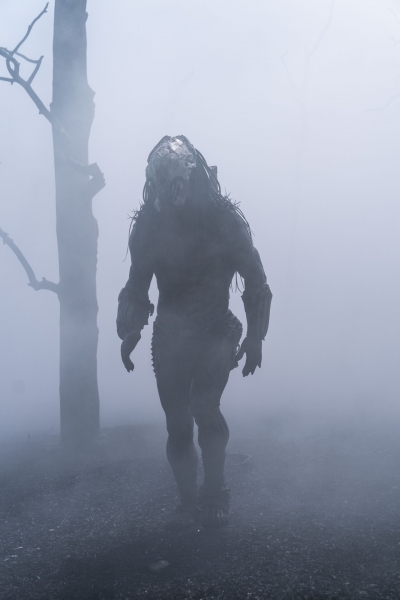
The technology of creating the creature suits and prosthetic makeup has changed since the original movie. “The motors keep on getting better and better,” remarks Woodruff Jr. “The suit is basically the same material, a foam latex. It stretches, which is inherently fragile. The only tricky part is balancing how strong can you make the suit to make it last without impeding Dane’s movement. Beyond that the actual articulation of the face is not something that sits on the shelf. It has to be redesigned and take advantage of the much different shaped face that this Predator had.”
Trevor Hogg is a freelance video editor and writer best known for composing in-depth filmmaker and movie profiles for VFX Voice, Animation Magazine, and British Cinematographer.
Physicality drives the Predator’s performance, as there are no lines of dialogue. “I went to mime school,” remarks DiLiegro. “With this character I have task of telling a story to people nonverbally and there is an interesting factor with the Predator. You have to give the Predator a sense of personality without humanizing him. Because Predators carry this level of anonymity. I created a backstory for him. I don’t want to say it because I don’t want to create canon. It had a little hubris and maybe toyed with Naru [Amber Midthunder) too much and ultimately it got to him. It was an interesting task telling his story, what motivated him and made him fearful without using words.” Woodruff Jr. provided advice on the proper postures for the Predator. “Tom has a decorated past [as a creature suit performer] and he helped me along the way with some of those movements.”
“Tom and I both worked on the original Predator, have done a couple Alien vs. Predator movies and Shane Black’s The Predator,” states Gillis. “Dan respectfully said to us, ‘I don’t want this to look like all of those other Predators.’ To which we were thrilled. We have always in the past presented different ideas because to us there is room in this Predator universe for different looks and takes on the Predator. Dan wanted something that was more like a horror character and less like a beautiful science fiction character. It took me back to the original Predator where it was a scary face. It has become a beloved and familiar face now. We thought, ‘We should do some things to make this guy creepier.’ This is where these longer thinner dreadlocks come from. We were all talking about how would this appear to Native people. Could this be the basis for the Wendigo or some other Native spirit? We were going more horror with these science fiction attributes added on.”
Originally, devolution of the Predator was explored. “Some of the first concepts were like a Neanderthal version, but it felt inelegant, so we went more alien, such as eye spacing a little further apart and a back swept head,” reveals Gillis. “Little touches that would not make it look like a guy.” Changes were made because of the story and to shake up the design. “Making the dreadlocks smaller took more pressure off of the back of Dane’s head,” notes Woodruff Jr. “A key thing in Dane’s performance is there were no iconic moves good or bad that he had to inherit from earlier Predators. The other thing is this was so much more mobile. The whole thing with the chase through the trees. You never feel that this new Predator is slowly walking through the woods looking for somebody to attack. It was always well-thought out. This Predator is less bulky. He’s a thinking intelligent being rather than a scary monster guy.”
“Typically, they will build around the bulky actor but when you’re playing a nonhuman character it’s not about me.” observes DiLiegro. “It’s up to me to create a nexus between being a human inside a suit while also staying true to what they want presented to the audience. It was a challenging and fun experience to do that, a real team effort. Every day was a new challenge, whether we were in mud or what have you.”

3D scans were taken of DiLiegro. “We sculpted a head in a 3D program and did it directly over Dane’s head so that we knew it would be a precise fit,” states Gillis. “We also had scans of Dane’s body that we designed over and then hand sculpted the Predator’s body. We laid thin sheets of clay on the body cast so we ultimately had a precise thickness of foam that we were dealing with.” It came down to a matter of inches. “They jammed everything that they possibly could in the right place inside of this head,” notes DiLiegro. “If my giant melon was a half inch bigger, I wouldn’t been able to play this character because it would have ruined the design!”
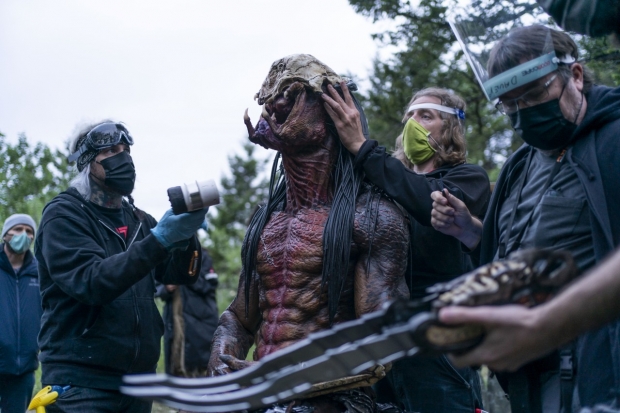
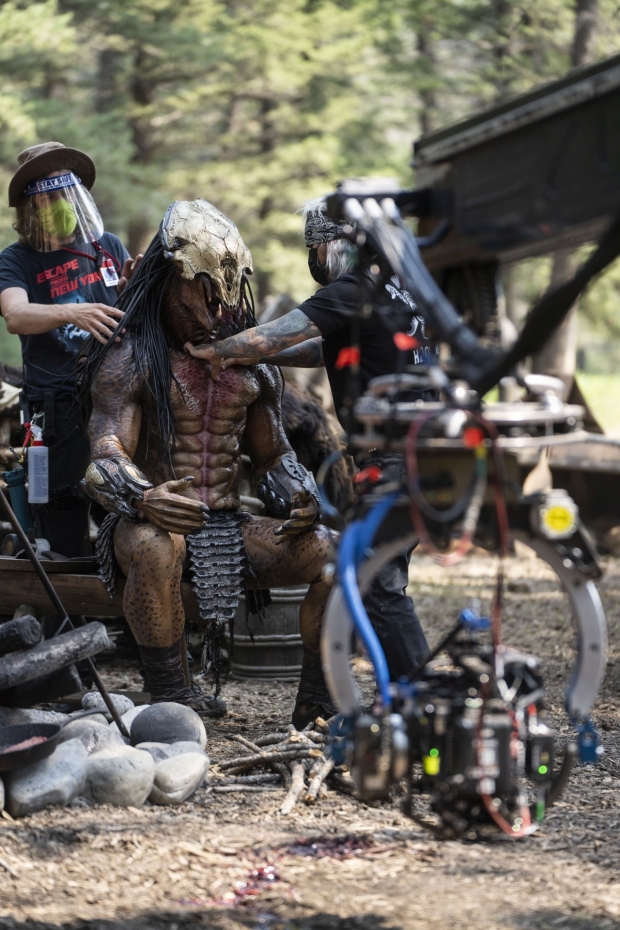

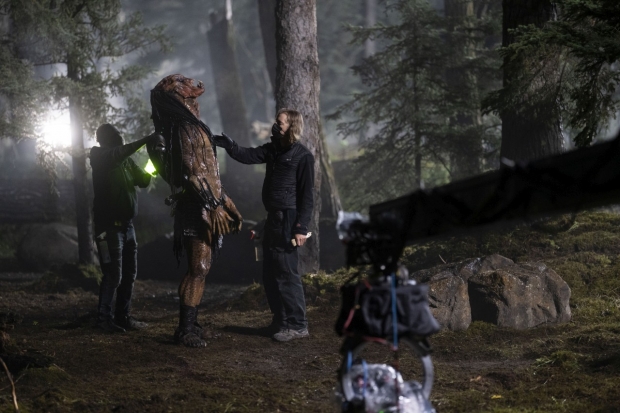
According to DiLiegro, “The first thing that Dan told me was, ‘Don’t copycat Kevin Peter Hall.’ I would never be able to do that even if he had asked for it. For the design of the Predator this time around, there were a lot of key words that we used like feral, primal, animalistic, visceral, lean, and dynamic. Initially, Alec reached out to me about the design pitch of this character. I went to the studio and wore a mock-up of what we thought that this thing could potentially be. He told me to bring with me a ‘balletic svelteness’. I still don’t know what that means! I tried to give him what I thought this character would be and it turned out positive.” Gillis laughs, “I’d never seen him perform so I wanted to make sure he brought some elegance and fluidity of movement as opposed to the Hulking Stuntman School of Suit Performance. He did a great job with the note!” DiLiegro embraced what was presented to him. “The redesign of the creature granted me a creative high ceiling with how this character would move, think, feel and with Tom and Alec how it would look. It was fun creating a new road for this species of alien hunters.”
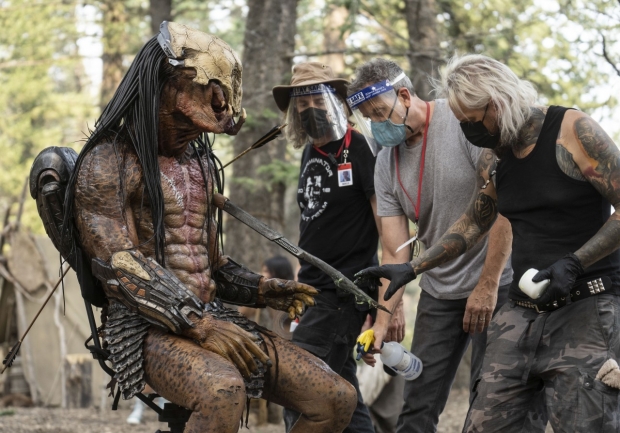

Woodruff Jr. welcomed the opportunity to work again with the character that originally pursued and tormented Arnold Schwarzenegger in the rainforests of Central America. “I can’t imagine going, ‘Not another Predator!’ With every iteration of the Predator, I always try to make certain artistic steps to differentiate it even if it’s not called out for in the story but with the director’s permission. This was a much bigger redesign. 80 percent of it is in the head and that incredible bio-helmet, while the rest was in the body of the suit. We were in a position where we wanted to take advantage of Dane DiLiegro’s physicality and not tack on a lot of big muscles. We didn’t want to build him up as a super scary guy. The idea was to rely on Dan’s own musculature and just add the skin over the top of that without changing it an incredible amount, because it was still a human body that we wanted to make work.”
